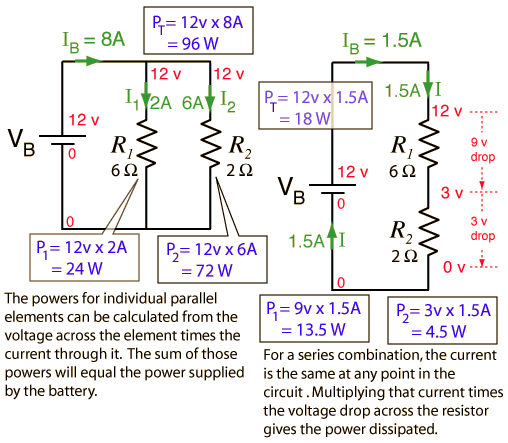Power Dissipated in Resistor
Convenient expressions for the power dissipated in a resistor can be obtained by the use of Ohm's Law.

These relationships are valid for AC applications also if the voltages and currents are rms or effective values. The resistor is a special case, and the AC power expression for the general case includes another term called the power factor which accounts for phase differences between the voltage and current.
The fact that the power dissipated in a given resistance depends upon the square of the current dictates that for high power applications you should minimize the current. This is the rationale for transforming up to very high voltages for cross-country electric power distribution.
DC Circuits
| HyperPhysics***** Electricity and Magnetism | R Nave |
